We chat with filmmakers Myles Storey and Toby Lloyd, whose short films Finding Solo and Mum’s Spaghetti were shortlisted for the 2024 Sony Future Filmmaker Awards. Storey and Lloyd met in Los Angeles during the four-day workshop program at Sony Pictures Studios and soon after decided to collaborate creatively—despite coming from different filmmaking backgrounds: documentary and fiction. Their latest project, Would You Still Love Me If I Was a Frog? blends these two genres in a fresh and innovative way. Read this interview to learn more about their backgrounds, creative processes, and cross-border collaboration.
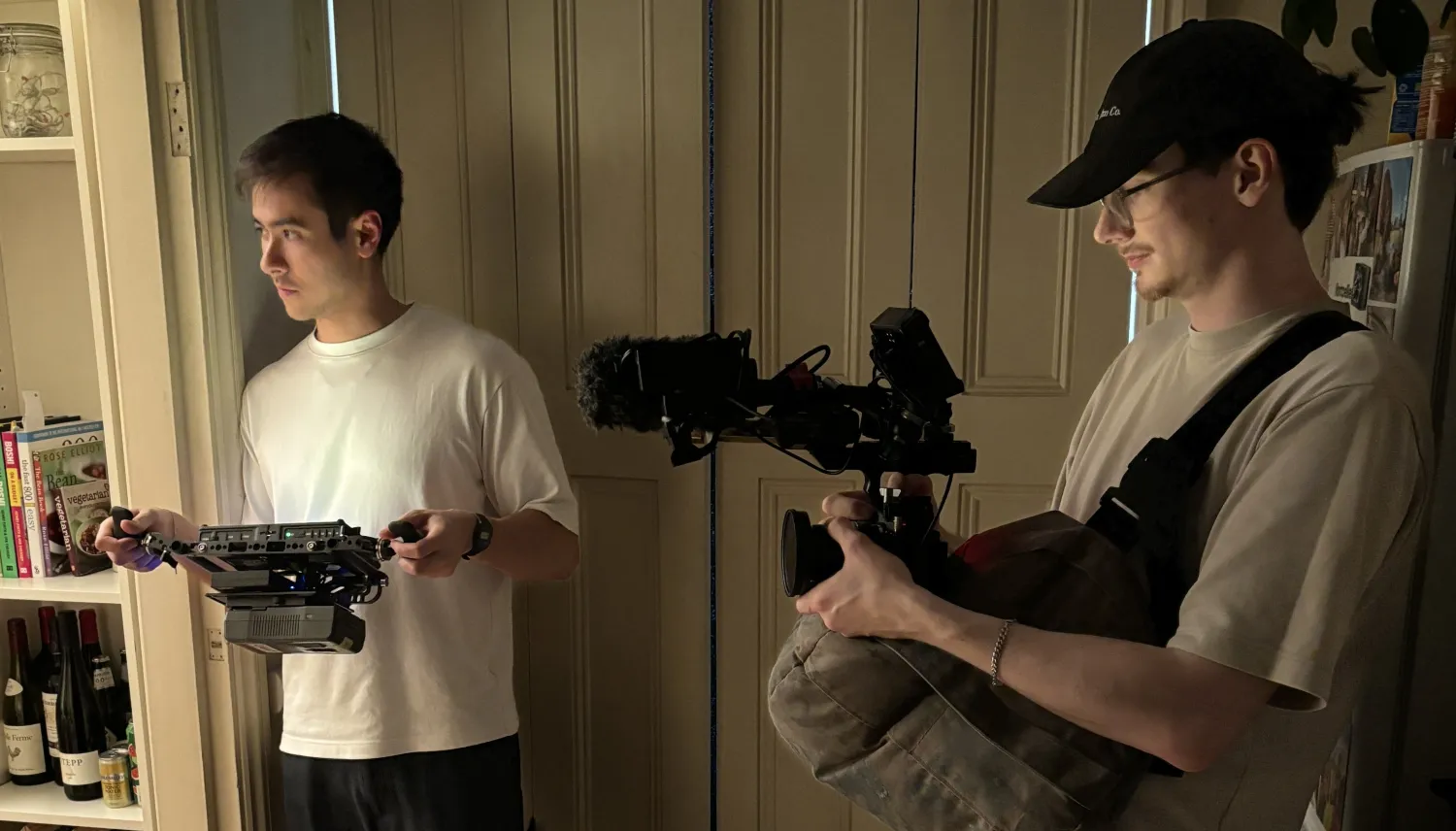
Can you tell us a little bit about yourself and what inspired you to become a filmmaker?
Myles: Growing up in Borneo, which has some of the richest ecosystems on earth, really shaped my interest and desire to tell stories that connect us to nature. I was inspired to become a filmmaker from the many amazing natural history programmes I watched as a kid, from national geographic shows to some of the BBC’s landmark wildlife series, and I especially enjoyed seeing any sort of behind-the-scenes footage from these programmes. This interest led me to pursue a degree in Zoology from the University of Wisconsin-Madison and a Master’s in Wildlife Filmmaking at the University of the West of England in partnership with the BBC. I hope to continue making films that bring us closer to nature and have real-world impact in the field of conservation.
Toby: I’m a London based Cinematographer, working mostly in narrative but also shooting documentary projects too. I graduated from the National Film and Television School with an MA in Cinematography in 2023, projects I’ve shot have been successful at festivals and won numerous Children BAFTA awards. I think my inspiration to be a filmmaker stems from an overwhelming love for stories, whether that’s a novel, video game or a movie, I’ve always been captivated by worlds, and to be a part in creating new worlds and insights for people to enjoy, learn from, and relate to (hopefully) is what attracted me to the art form.
What is Would You Still Love Me if I Was a Sticky Frog? about, in your own words? What would you like the viewer to take away from it?
Myles: This film is a window into the lives of a young couple in a long-distance relationship trying to balance their personal ambitions and love for each other. It explores the complexities of building a future together in a world increasingly shaped by globalization and consciousness of environmental issues. Ultimately, this film aims to shine a spotlight on the sticky frog, proboscis monkey, and great hornbill, particularly for audiences who might not typically engage with natural history content. By weaving a human love story into the narrative, I hope to capture people's interest and foster a fun, light-hearted appreciation for these species.
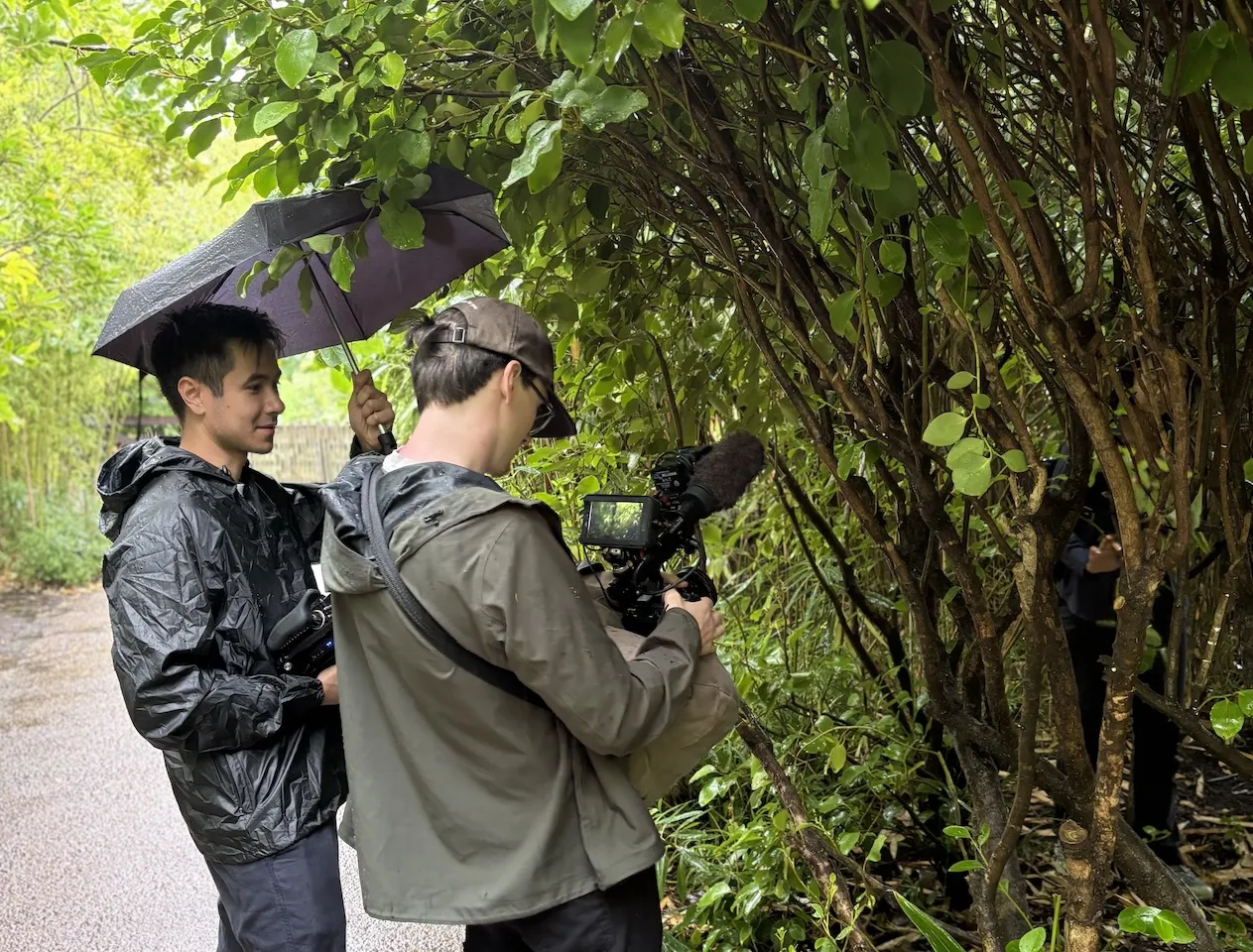
Your film is a love story intertwined with an environmental message about conservation. What influenced this unique approach to storytelling?
Myles: This film was supported by On The Edge and Wildscreen Festival through a grant that was looking for out-of-the-box natural history films, so I pitched an idea that wasn’t like anything I’ve seen in the wildlife documentary genre. I wanted to craft a story that resonates with young people by exploring themes like relationships, finding our place in the world, and balancing our everyday lives with the responsibility of caring for our planet. For a long time, I thought storytelling about wildlife had to fall within the realms of behaviour or conservation, but for this project, I wanted to take a different approach and create a film that celebrates these EDGE (evolutionary distinct and globally endangered) species in a refreshing and engaging way. Inspired by the meme ‘Would you still love me if I were a worm?’, I saw an opportunity to use this format to spotlight various species and their unique challenges, blending humour with important environmental messages.
What were some of the challenges you faced combining the two contrasting genres - romantic fiction and environmental documentary - and how did you overcome them?
Myles: There aren't many films that blend natural history and fiction quite like this one, which meant I didn’t have much to draw from when making creative decisions. Another challenge was the unpredictability of wildlife—there was no way to guarantee which behaviours or sequences we’d be able to capture. Fortunately, we had some time to experiment and refine the script through trial and error. I collaborated with the talented screenwriter, Sachi Leith, to develop a rough script before filming began, leaving plenty of flexibility to adapt as needed.
My experience filming wildlife, along with extensive research and consultations with experts, gave us a rough idea of what to expect going into each shoot. Once we captured footage of the three animal species, we revisited the script, essentially creating a new version while staying true to the original framework. Even after we captured all the wildlife footage, I still was worried about how we would transition seamlessly between the human and animal worlds. To help visualize the story, I edited all the wildlife sequences and then used AI-generated images and voices to fill in for the acting scenes to create a (really bad) rough draft. This approach really helped us fine-tune the script and nail the tone of the film before involving the actors. It turns out AI isn’t all bad!
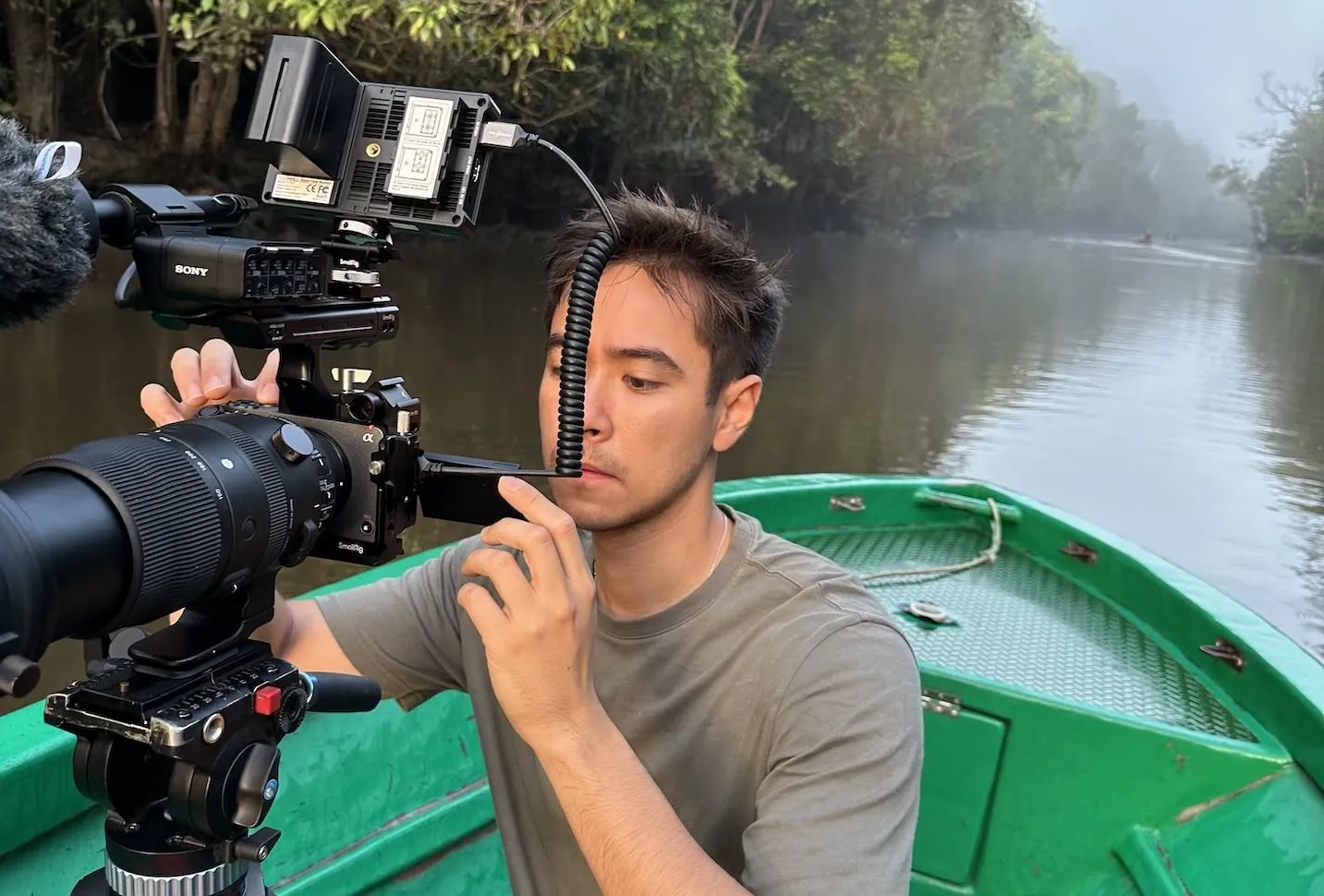
You were both shortlisted in the 2024 edition of the Sony Future Filmmaker Awards, in two different categories: Environment and Animation and met during the immersive program at the Sony Pictures Studios. How did this collaboration come about?
Myles: Coming from a documentary background, Sony Future Filmmaker Awards 2024 opened my eyes to the world of narrative storytelling and showed me the level and quality that independent filmmakers are putting out. At the time of the awards, I had filmed all the wildlife sequences in the film and was casting and crewing up for the acting scenes, so meeting so many other filmmakers and watching their films really inspired me to want to collaborate on this project. Toby was one of the first people I met and his love for cinematography really came through in our conversations. I mentioned this film to him briefly at the events and then we met up back in London to discuss further. Bringing Toby on board turned out to be one of the best decisions I made for the film. His eye for cinematography and skills elevated the visual storytelling to a whole new level. I’m still in contact with a few of the filmmakers from Sony Future Filmmaker Awards 2024 and have met up months after the event. I hope there are more collaborations to come!
Toby: Myles and I met on the first day of the Sony Future Filmmaker Awards week in LA, we struck up a conversation and enjoyed hanging out during the week – one of the great things I found about the awards was that everybody there seemed genuinely interested in chatting about each other’s films and hearing about how we all worked and made our projects. It was a unique atmosphere for a film event, as there were people from many different parts of the industry that don’t usually overlap – as with Myles and I – I was there having DPed a stop motion and Myles had directed a nature doc. Generally there isn’t a huge amount of overlap crew wise between these different sectors of the industry, but it’s all storytelling and being able to chat and then work with Myles was great. Myles asked me to shoot the fictional parts of his film as he was shooting them in London and I think the meeting in LA was fortuitous as it wasn’t long after we met that the shoot came about!
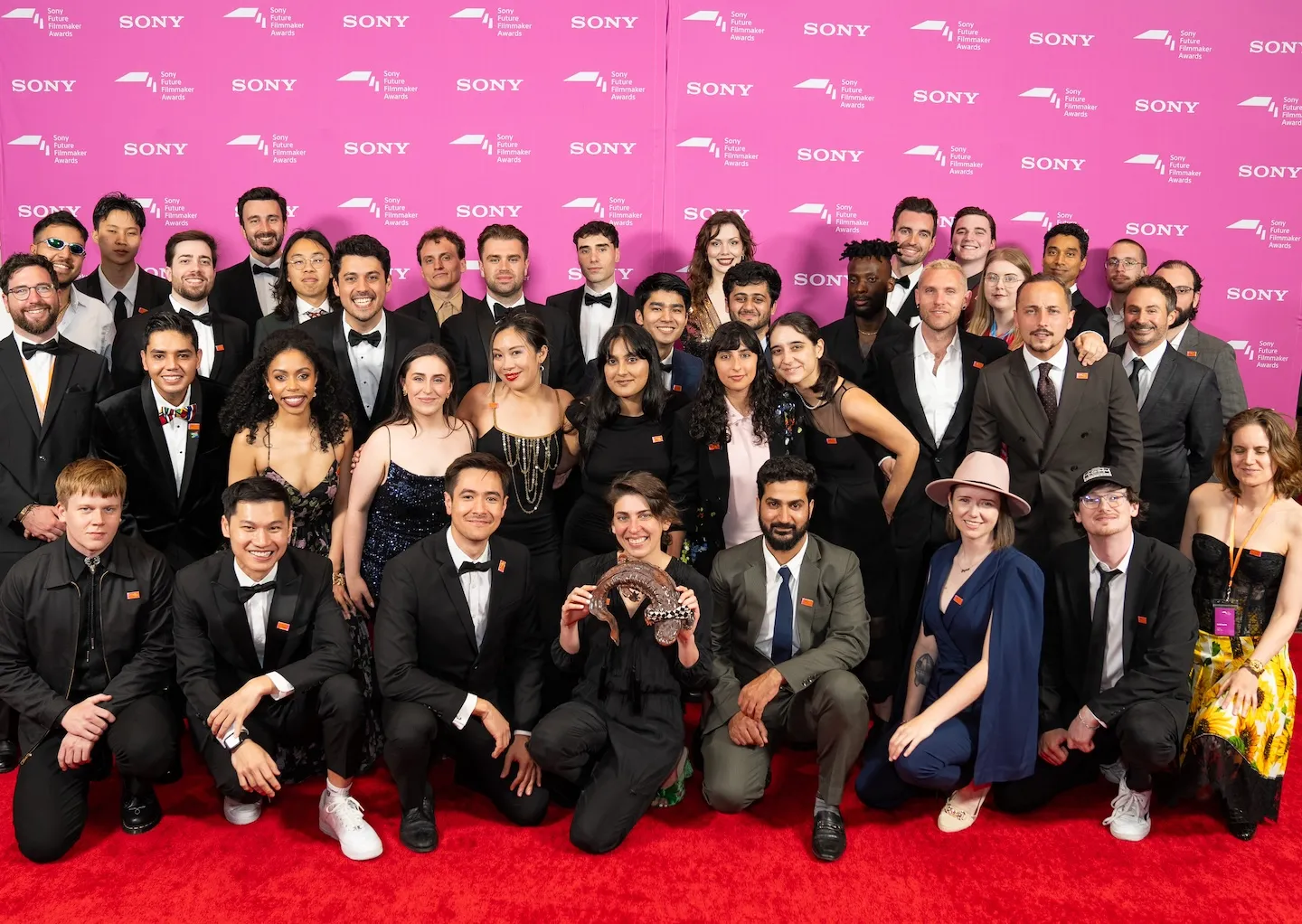
Can you share some insights into the behind-the-scenes process of making your independent short film?
Myles: I only shot a small portion of Myles’ brilliant film – and Myles had already shot the rest of the film in Malaysia beforehand, so my goal was to listen to him, check out what he’d already photographed, and ensure what we did in London felt somewhat in the same world. We shot on the Sony FX3 and FX6, which I think is what Myles also used for the nature elements too, I think the hardest element for us was – on a very limited budget, to attempt to create the idea that the female character was in a rainforest for one scene (rather than London Zoo on a very rainy day!), and then in her flat in Malaysia rather than East London. Myles really lead on this as I’ve never stepped foot in a tropical rainforest, and haven’t spent masses of time in South East Asia, so we had conversations about how the light should feel, and framed out certain telltale signs that may give away the location.
Toby: I only shot a small portion of Myles’ brilliant film – and Myles had already shot the rest of the film in Malaysia beforehand, so my goal was to listen to him, check out what he’d already photographed, and ensure what we did in London felt somewhat in the same world. We shot on the Sony FX3 and FX6, which I think is what Myles also used for the nature elements too, I think the hardest element for us was – on a very limited budget, to attempt to create the idea that the female character was in a rainforest for one scene (rather than London Zoo on a very rainy day!), and then in her flat in Malaysia rather than East London. Myles really lead on this as I’ve never stepped foot in a tropical rainforest, and haven’t spent masses of time in South East Asia, so we had conversations about how the light should feel, and framed out certain telltale signs that may give away the location.
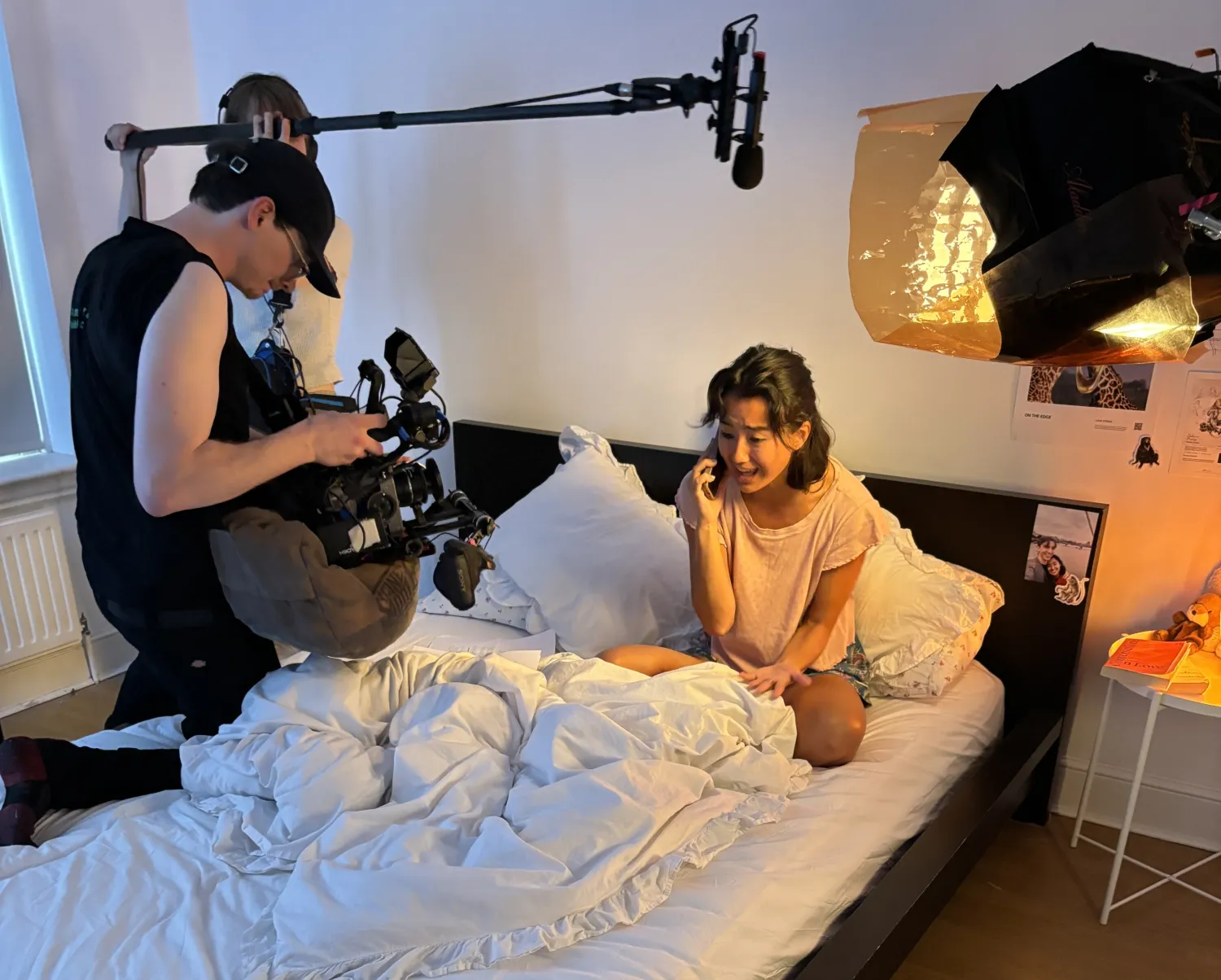
What is your favorite scene in the movie and why?
Myles: Spoiler alert! My favourite scene in the movie is the final scene where there’s a quick montage of Nick’s memories mixed in with the wildlife world which ends in a monkey leaping into a river. I hope it leaves the audience with enough to know that it’s a happy ending without being too perfect. Plus, I also knew how hard it was to get that shot so I appreciated it ever more!
Toby: Of the scenes I worked on my favourite elements are in the montage, I particularly loved filming the guys on the bridge, it was super run and gun but had such a lovely energy. But my actual favourite scene in the film is the moment the monkey jumps out of the tree and into the water – what an incredible moment they captured when shooting in Malaysia!!
Can you share a memorable moment from the production of Would You Still Love Me if I Was a Sticky Frog?
Myles: The most memorable moment for me was when we were trying to film the proboscis monkeys jumping into the river from some really tall trees - a behavior that happens, on average, just once a week and can occur anywhere along one of the channels off the Kinabatangan River. With only five days to film, the odds were stacked against us, and timing was everything. One morning, we suddenly found ourselves in between about 3-4 monkeys jumping into the river. I had my camera pointing in one direction and the other camera operator, Izzy Sasada, had a wide shot pointing in the other direction. We felt incredibly fortunate to witness and record a couple of proboscis monkeys making the leap and swimming across to the other side—a moment I won’t forget.
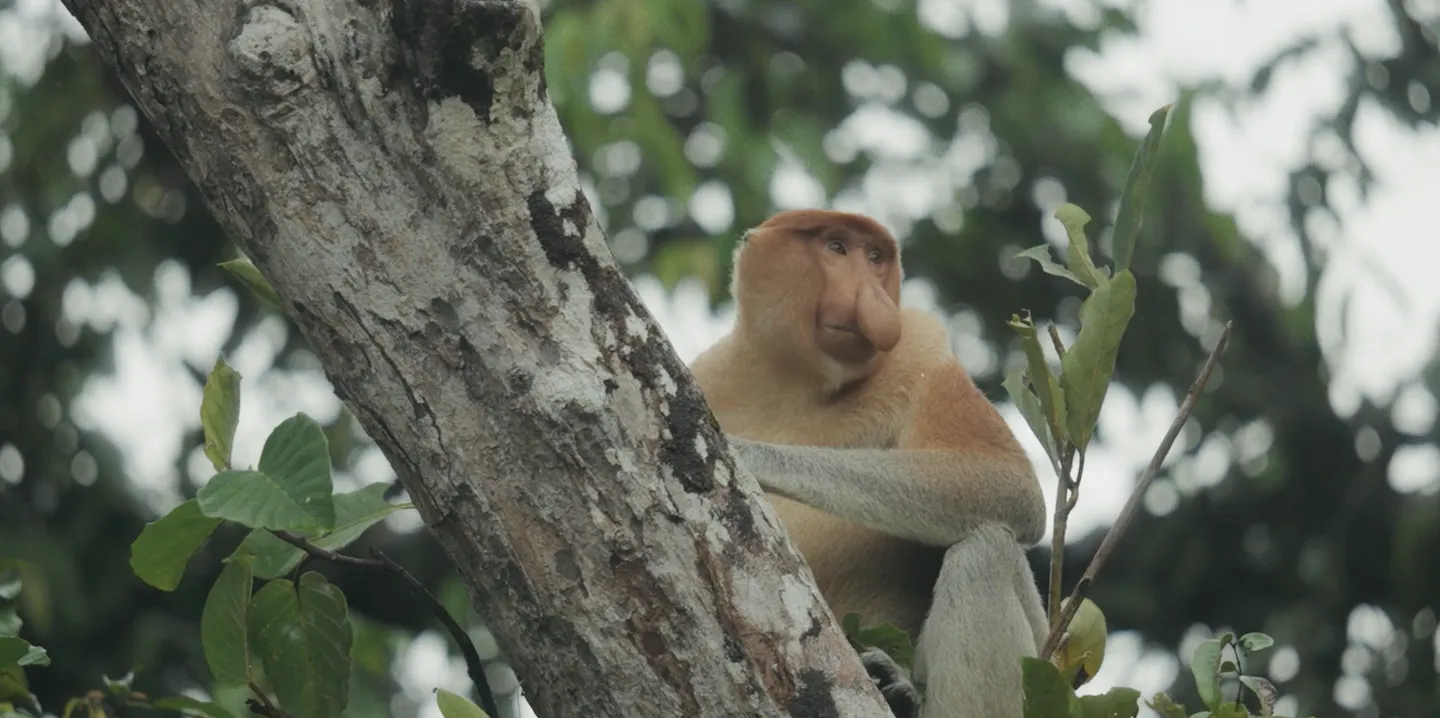
Who is your biggest inspiration?
Myles: My biggest inspirations actually come from the world of photography, with people like Tim Laman and Chien Lee. They dedicate themselves to capturing rare, never-beforeseen images of rainforest creatures. The level of preparation, patience, perseverance, and resilience they must have to endure is truly inspiring. I hope to channel that same relentless drive into my own work, bringing wildlife stories to the forefront and inspiring meaningful change by connecting these tales to a broader audience
Toby: This is a really broad question to answer with one person, but filmmakers who really inspire me are the Taiwanese New Wave director Edward Yang – I love his precision with the camera somehow it’s always in the perfect place, the width in his framing and trusting that you can just leave a shot developing, it’s something I try to question in every project I’m shooting, no matter the genre, what’s the simplest most direct way of doing this and how can we add some poetry to the imagery? I’m also immensely inspired by the films of Robert Altman for the way he photographed such brilliant performances creating a particularly non-invasive method utilising zoom lenses, Andrea Arnold and Kirsten Johnson – her film Cameraperson is a masterpiece.
What's the best piece of career advice you've ever received?
Myles: “Perfectionism is holding you back – it’s better to do something bad, then nothing at all” – something that always helps me whenever the doubts and fear would creep into the creative process, making it hard to take action and push forward.
Toby: I think this has got to be advice that Stuart Harris – one of the Cinematography tutors at the NFTS, gives his students, which is that everybody’s style is within them, and we needn’t look for external validation and confirmation for the way to shoot, trust what’s within us and let that guide us in how to photograph a film.
Would You Still Love Me if I Was a Sticky Frog? premiered late last year at the Wildscreen film festival in Bristol, England. What’s next for your short film? Are you currently working on anything else?
Myles: The film was created to be shared with a digital audience and therefore, was released online right after the premiere. It is now available on YouTube on On The Edge’s channel. I’m currently developing a longer form documentary idea about one of my favourite animals – the gibbon.
Toby: I’ve had a very busy year shooting short films, many projects I worked on this year are still in post, so what’s next will be numerous grades in the new year.
